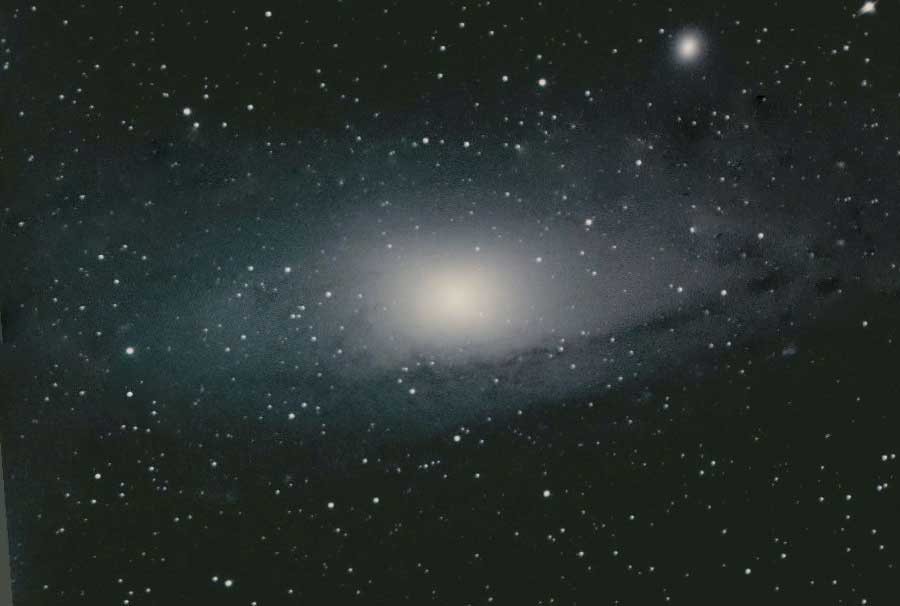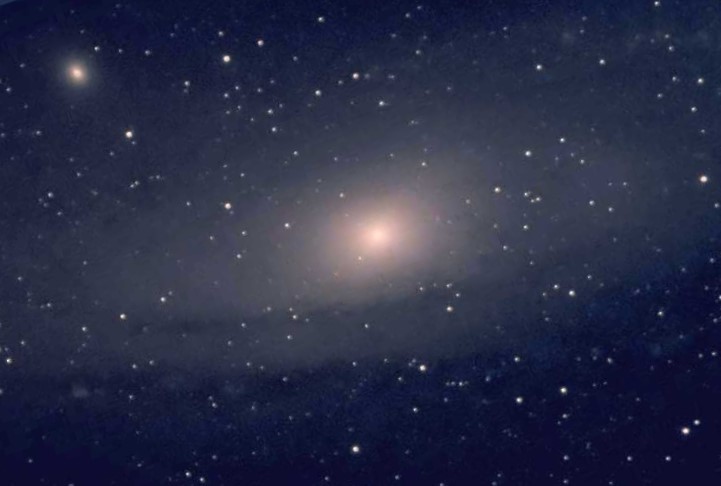I'm trying to get this one processed
Jan 26, 2022 10:03:31 #
I get so frustrated but, this galaxy has been a challenge after 72GB of data poured into it from my LP driveway. It's a work in progress like all the others, still working on it.

Jan 26, 2022 14:26:42 #
Ballard
Loc: Grass Valley, California
stepping beyond wrote:
I get so frustrated but, this galaxy has been a challenge after 72GB of data poured into it from my LP driveway. It's a work in progress like all the others, still working on it.
What is your procedure for processing the images. Here is short summary of what I do.
For each separate filter set:
1. Use a subframe selector to pick out and keep the best images (I also do a visual scan of each set and toss those where the stars might come out too elongated). I also pick out the best frame (usually from the luminance image) for use later in image registration as a reference frame.
(Put the images in a per filter "good" directory)
2. Calibrate the images with the appropriate flat frames for a given filter, and optical train, along with bias and dark frames.
(Put the images in a per filter "calibrated" directory)
3. Use the same reference frame to register each filter set based on star alignment and also create drizzel data).
(Put the images in a per filter "registered" directory including drizzel data).
4. Stack each filter set separately (Since the same reference frame was used it will be easy to later combine to a full color image).
5. (Typically I also will create a PSF from stars in each stacked filter set and use it do any deconvolution that might help). Sometimes with a range mask
6. Then I do a multilinear noise reduction on each filter set. Also with a range mask as it is usually only the dim areas that have much noise.
7. Then I stretch each filter set and try and keep the intensity of the background (spot with no nebula or stars) to around the same level for each to go for a dark neutral grey background color.
I then combine the filters to make a full color image. At this point I may do some background neutralization and or gradient removal depending on the image, in extreme case might need to create range mask).
If any sharping is helpful, I might do some at this point. (Sometimes with a range mask).
Finally, I will adjust the luminance and colors as needed.
Lately I have also found it useful to use starnet to create an image without stars and a separate star mask with only the stars. (I did this for both the Orion and Rosette nebula). Doing this allows me to modify the nebula and stars separately and then recombine them using pixelmath. I have found that the sheer brightness and number of stars can become a distraction to the image and separating them makes it easy to brighten the nebula and or dim the stars to avoid the distraction. For narrow band this also makes it easy to put the stars in from an LRGB image and avoid the magenta stars that typically occur with narrow band with the Hubble pallet. Note: starnet is extremely CPU intensive, for the images I have used it one it runs for around 30 hours a max resolution with a 3.5 Ghz 16 core machine running at 50-60%.
I forgot to add that I might also do some post processing image work with a standard photo editor to crop the edge of the image since the drizzel means each image is slightly off and you get some junk at the very edge after registration and stacking. I also convert the images to a tiff file and then to a jpeg usually compressed to get it under 20meg.
Jan 26, 2022 17:46:32 #
I do like the narrow band images as opposed to the lrgb, vibrant colors makes it really "POP". I lack an 0lll filter and then I'm going to mess everything up by removing the image train. I'll spend hours running new calibration frames. Since I'm using 7nm Ha & Sll what should Olll be in nanometers?
Jan 26, 2022 20:29:06 #
Ballard
Loc: Grass Valley, California
stepping beyond wrote:
I do like the narrow band images as opposed to the lrgb, vibrant colors makes it really "POP". I lack an 0lll filter and then I'm going to mess everything up by removing the image train. I'll spend hours running new calibration frames. Since I'm using 7nm Ha & Sll what should Olll be in nanometers?
I expect that anything from 3 to 7nm would work just fine. I'm currently using a 5nm set of Astrodon filters.
Note: for Galaxies, normally the LRGB is fine. The Ha added to red can add info that really shows up the nebula regions in the galaxy. I haven't seen examples of folks using OIII or SII on galaxies but it would be an interesting experiment.
Jan 27, 2022 10:30:58 #
Thanks Buddy , I'll try to find one or It'll be March before they get that shipment in along with a 7 pos efw.
Feb 4, 2022 18:56:02 #
Expect the weather to be miserable, I've got upgrades en-route. This is m31 after yalls help.

If you want to reply, then register here. Registration is free and your account is created instantly, so you can post right away.
